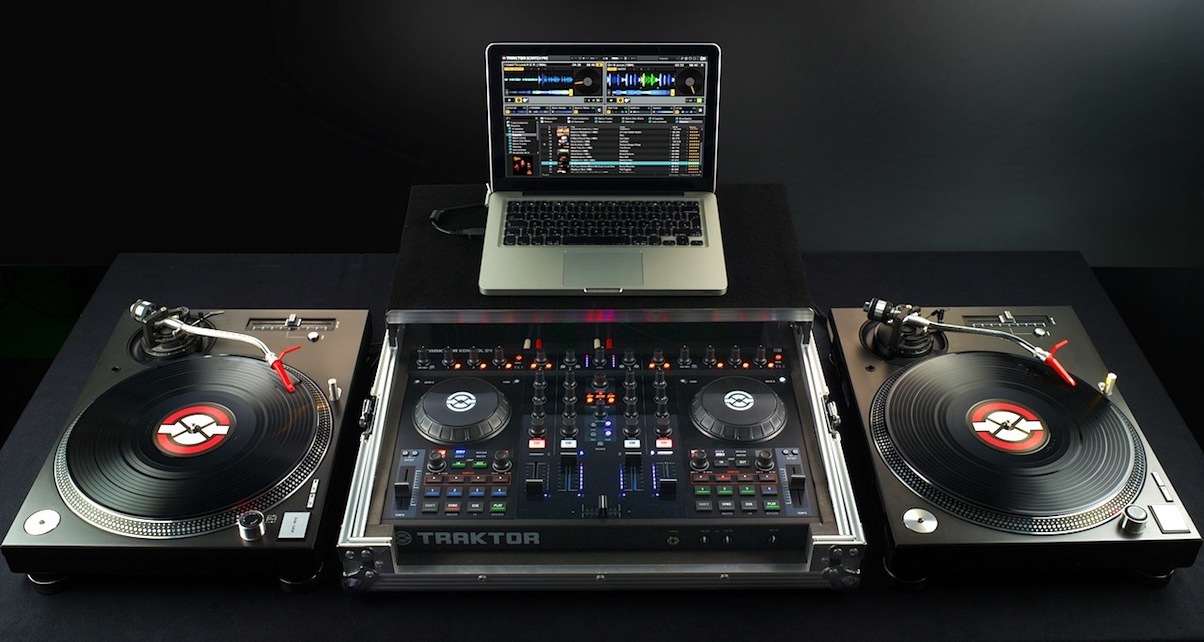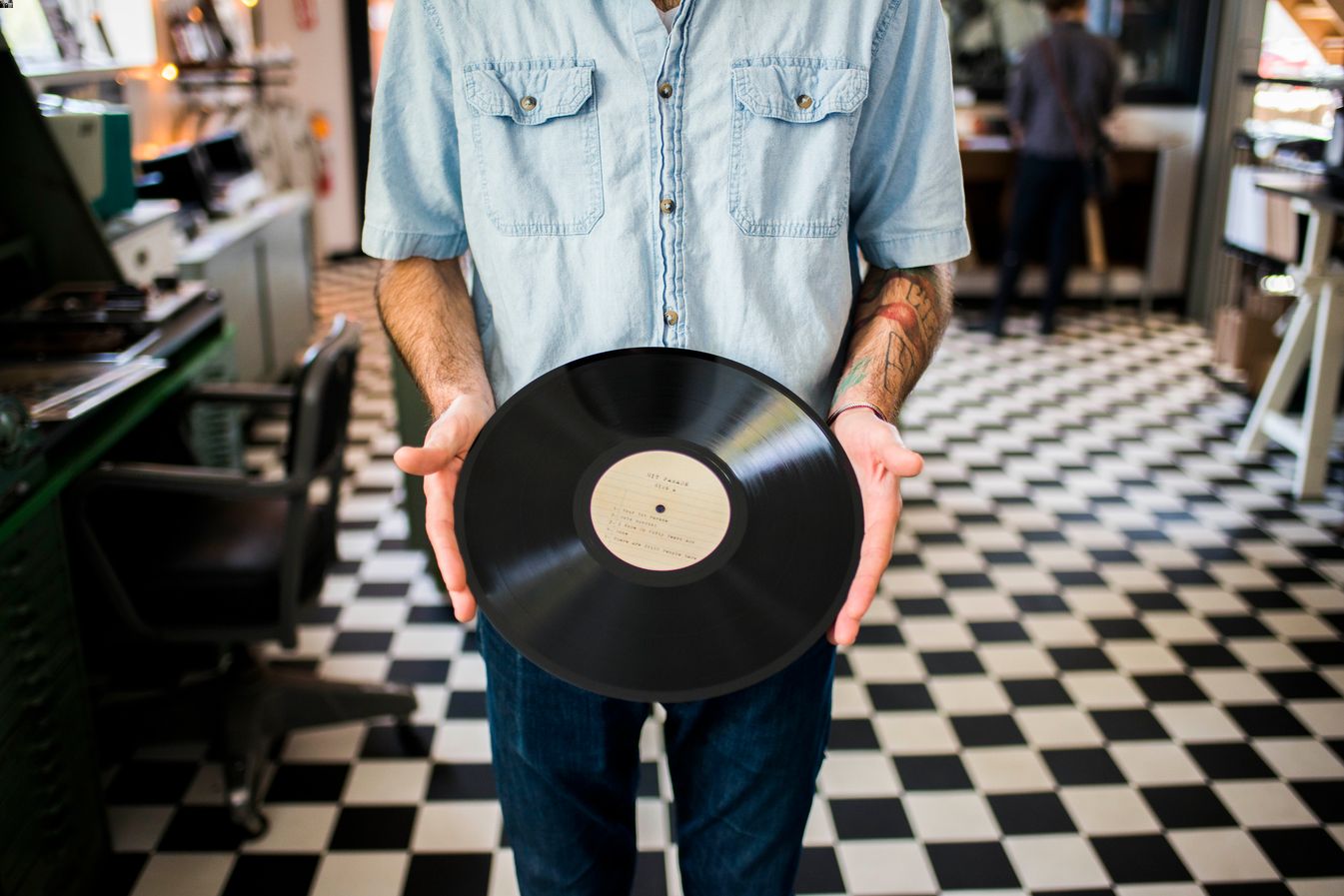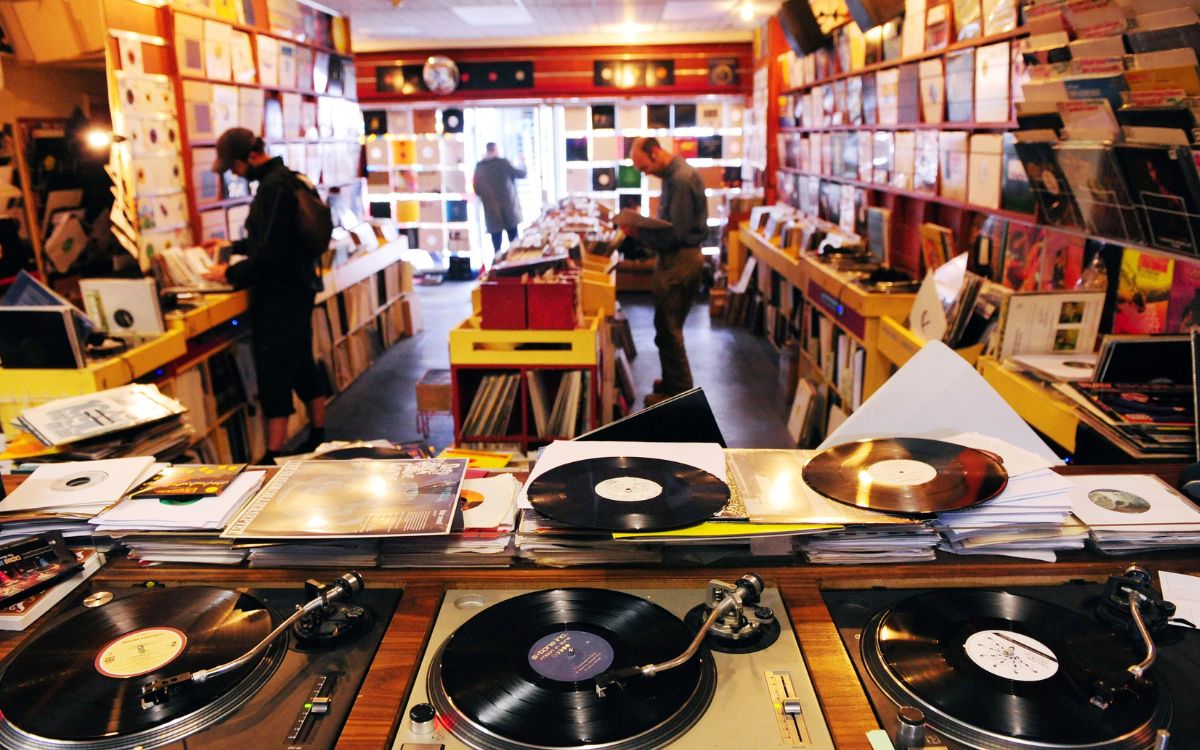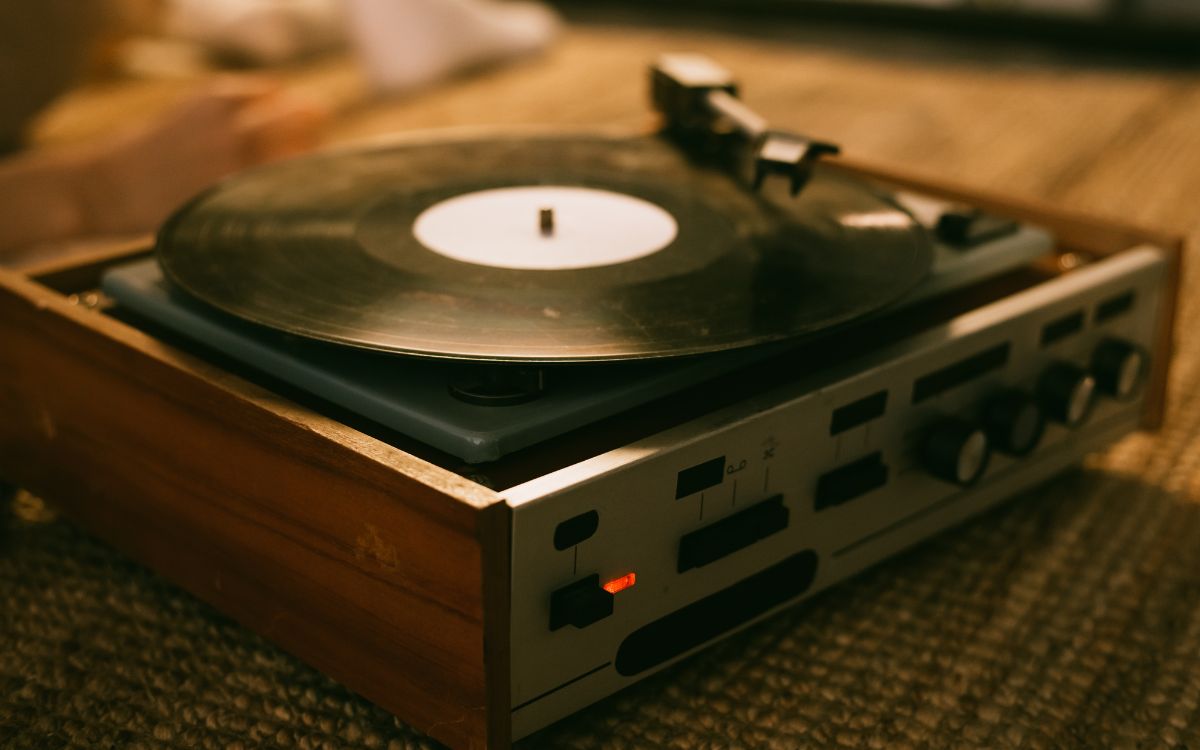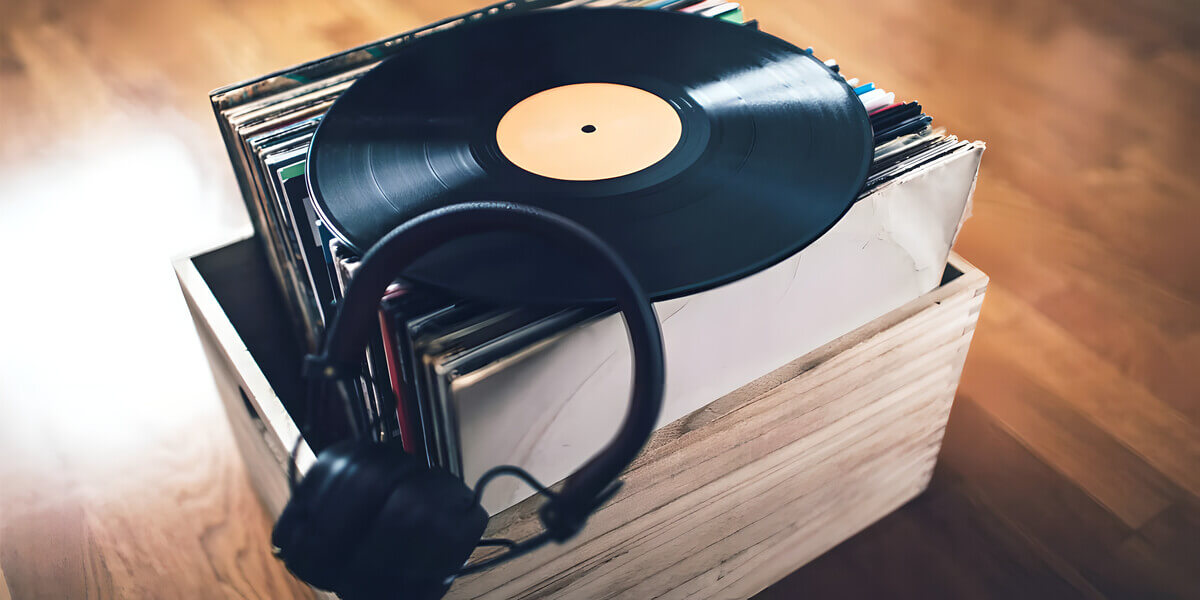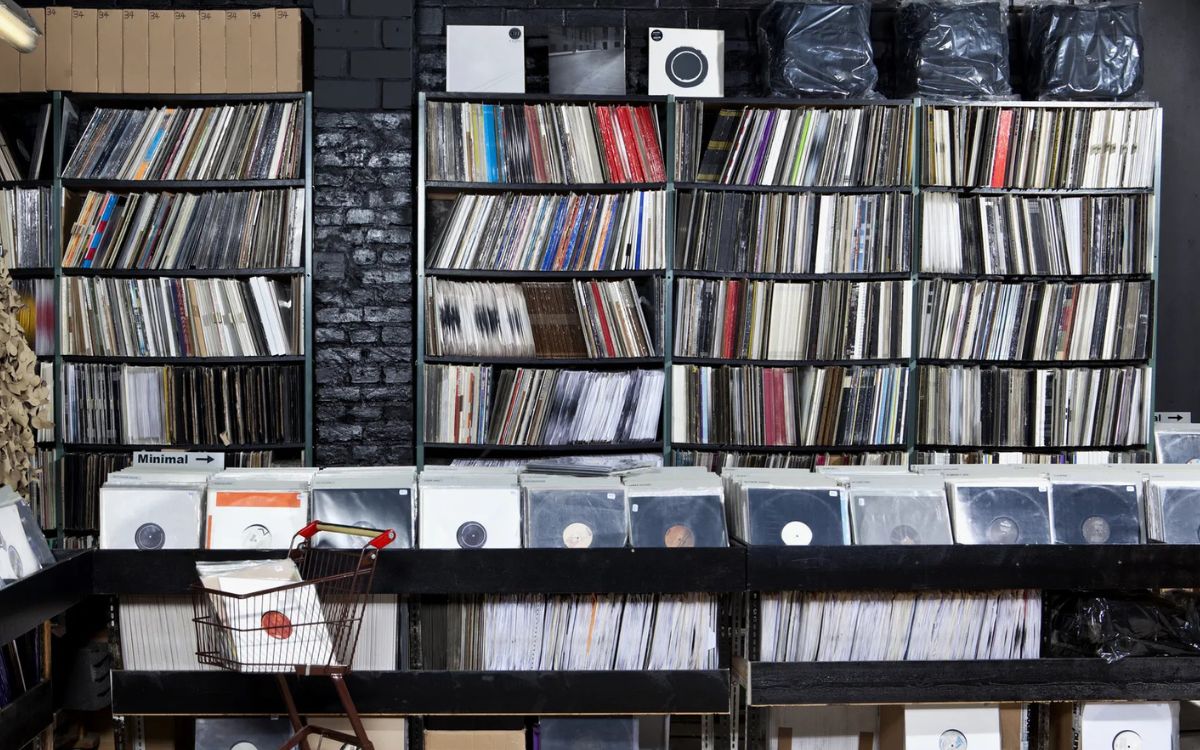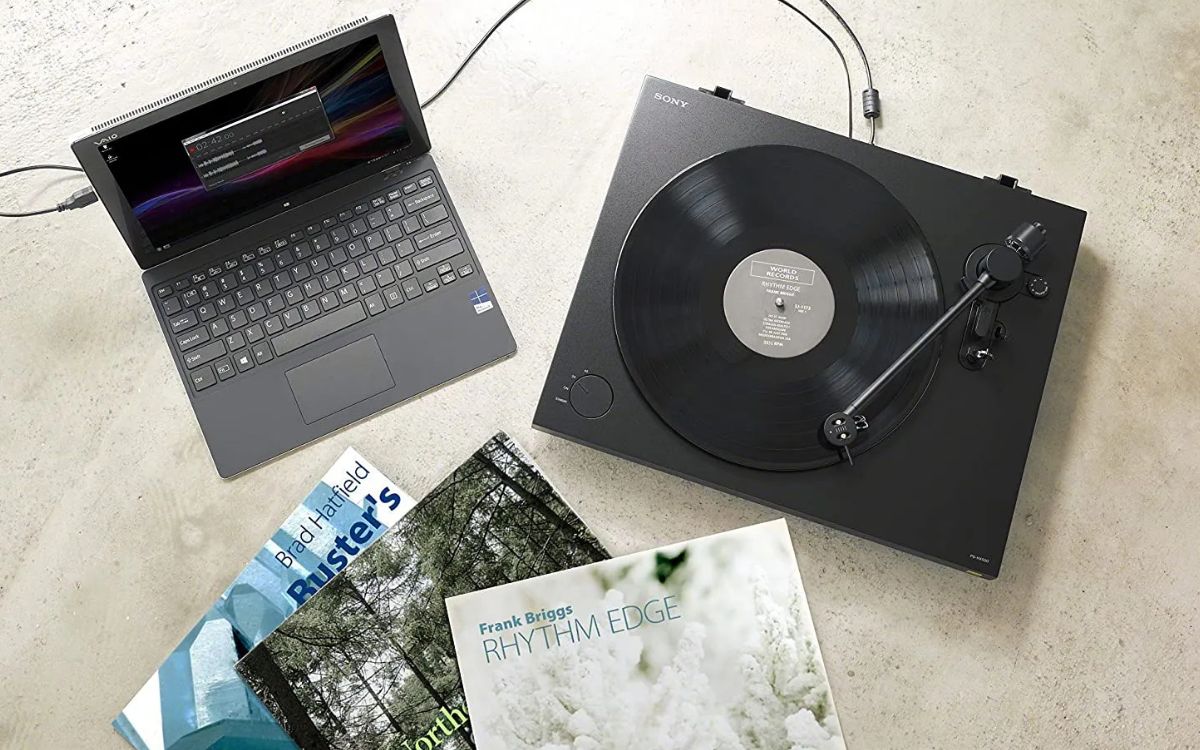Home>Production & Technology>Vinyl>What Is Vinyl Music
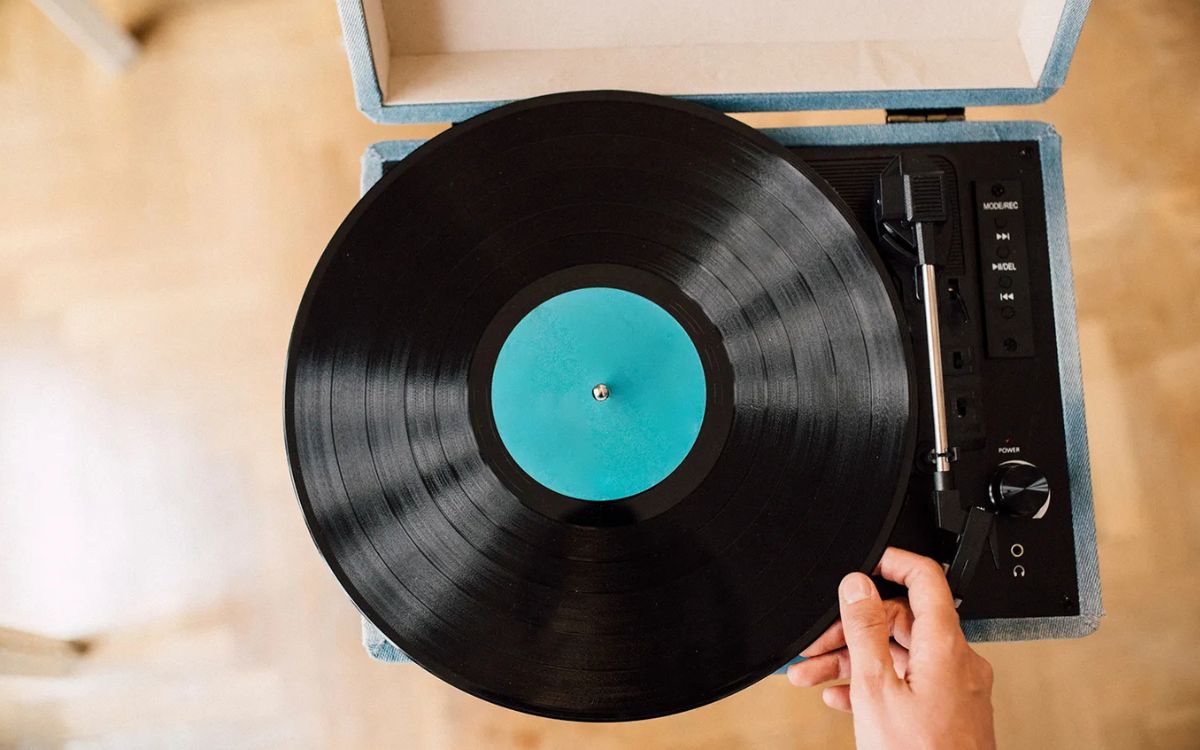

Vinyl
What Is Vinyl Music
Modified: January 22, 2024
Discover the charm of vinyl music with our comprehensive guide. Learn what vinyl is, its unique sound qualities, and why it's making a comeback in the digital age.
(Many of the links in this article redirect to a specific reviewed product. Your purchase of these products through affiliate links helps to generate commission for AudioLover.com, at no extra cost. Learn more)
Table of Contents
Introduction
Welcome to the wonderful world of vinyl music! In this digital age, where music can be streamed with a click of a button or downloaded onto a device in an instant, vinyl music has seen a remarkable resurgence in popularity. Despite the convenience and portability of digital formats, there is something truly unique and captivating about the experience of listening to music on vinyl.
Vinyl music refers to the use of vinyl records as a medium for storing and playing music. Vinyl records, also known as LPs (long-playing records), are flat discs made of polyvinyl chloride (PVC) that have spiral grooves engraved on both sides. The grooves contain the audio information that is read by a stylus, which is then amplified and played back through speakers or headphones.
The history of vinyl music dates back to the late 19th century when Thomas Edison invented the phonograph, a device capable of recording and playing back sound. However, it wasn’t until the 1940s and 1950s that vinyl records became the dominant format for commercial music releases. With their larger size and improved sound quality compared to previous formats such as shellac and wax cylinders, vinyl records revolutionized the music industry.
Over the years, vinyl records faced stiff competition from formats like cassette tapes, CDs, and digital downloads. Many predicted the demise of vinyl music, but it managed to survive and even thrive in niche communities of audiophiles and collectors. Now, vinyl music is experiencing a global resurgence, with both young and old music lovers embracing the format.
So, what makes vinyl music so special? It’s the combination of tangible aesthetics, warm sound quality, and the ritualistic experience. Holding a vinyl record in your hands and carefully placing it on a turntable is a sensory pleasure that cannot be replicated by digital formats. The crackle and pops that accompany the needle touching the vinyl adds a touch of nostalgia and authenticity to the listening experience.
Moreover, vinyl music offers a richer and fuller sound compared to compressed digital audio. The analog nature of vinyl records captures more details and nuances, resulting in a more dynamic and immersive listening experience. The process of flipping the record, adjusting the tonearm, and carefully placing the needle on the tracks adds a level of engagement that digital music simply can’t replicate.
In the upcoming sections, we will delve deeper into the world of vinyl music, exploring its history, benefits, care, and the impact of the digital age on this beloved format. Join us on this journey and discover the magic of vinyl music!
Definition of Vinyl Music
Vinyl music refers to the art and practice of playing music using vinyl records as the medium for audio storage and playback. Vinyl records, commonly known as LPs (long-playing records), are flat discs made from polyvinyl chloride (PVC). These records have grooves engraved on both sides, containing the audio information that is read by a stylus and translated into sound through speakers or headphones.
What sets vinyl music apart from other formats is the physicality and tangible nature of the medium. Unlike digital files or streaming, which are intangible and invisible, vinyl records offer a visual and tactile experience. Holding a vinyl record in your hands, feeling its weight, and admiring the album artwork adds a level of engagement and appreciation that is absent in other formats.
Vinyl music has a rich history that stretches back to the late 19th century when inventors like Thomas Edison developed early phonographs and cylindrical recordings. However, it wasn’t until the 1940s and 1950s that vinyl records emerged as the dominant format for commercial music releases. With their larger size and improved sound quality compared to previous formats, vinyl records revolutionized the music industry and became the preferred choice for music lovers around the world.
While vinyl music faced stiff competition from formats like cassette tapes, CDs, and eventually digital downloads, it managed to endure and even experience a resurgence in recent years. This resurgence is fueled by a combination of nostalgia, appreciation for the unique sound characteristics of vinyl, and a desire to disconnect from the digital world and engage with music in a more deliberate and physical manner.
In the modern era, vinyl music has become more than just a mode of listening to music; it has evolved into a symbol of rebellion, individuality, and artistic expression. Vinyl records are cherished not only for the music they contain, but also for their collectability and aesthetic appeal. Many artists and musicians release their work on vinyl, fostering a dedicated community of vinyl enthusiasts who actively seek out and collect albums.
Whether you’re a seasoned vinyl aficionado or a curious newcomer, vinyl music offers a unique and immersive listening experience that cannot be replicated by digital formats. From the crackling sound of the needle hitting the record to the expansive soundstage and warmth of analog audio, vinyl music creates an intimate and captivating connection between the listener and the music. So, dust off your turntable, put on your favorite album, and immerse yourself in the enchanting world of vinyl music.
History of Vinyl Music
The history of vinyl music is a fascinating journey that spans over a century, from its humble beginnings to its iconic status as a beloved music format. Vinyl music traces its roots back to the late 19th century, with the invention of the phonograph by Thomas Edison in 1877. Edison’s phonograph used tin foil cylinders as the medium for recording and playing back sound, but it was a relatively fragile and impractical format.
It wasn’t until the early 20th century that the concept of vinyl records began to take shape. In the 1920s, companies like Columbia and Victor introduced a new format known as shellac records, which were made from a mixture of shellac resin and fine-grained sand. These records were more durable and offered improved sound quality compared to their predecessors.
However, it was in the 1940s and 1950s that vinyl records truly came into their own and revolutionized the music industry. During this period, the development of polyvinyl chloride (PVC) as a suitable material for record production brought about a significant advancement in sound quality and durability. Vinyl records became the dominant format for commercial music releases, offering a larger size, longer playing time, and improved sound fidelity.
The 1960s and 1970s marked the golden age of vinyl music, with record sales reaching unprecedented heights. This era saw the emergence of iconic artists and bands that made their mark on vinyl, from The Beatles and The Rolling Stones to Led Zeppelin and Pink Floyd. Record stores became cultural institutions, and the act of flipping through vinyl records in search of the perfect album became a cherished pastime for music enthusiasts.
However, vinyl music faced stiff competition from cassette tapes in the 1980s and CDs in the 1990s. With their smaller size, portability, and digital audio capabilities, these formats posed serious threats to the dominance of vinyl. Many music enthusiasts predicted the demise of vinyl music, fearing that it would become obsolete in the digital age.
But vinyl music had a surprising resurgence in the early 2000s, fueled by a renewed appreciation for its unique sound characteristics and the rise of the vinyl collector culture. Vinyl records offered a warmth and depth of sound that was often missing in digital formats, and they became a symbol of rebellion against the cold and impersonal nature of digital music.
Today, vinyl music continues to thrive in a niche market, with both established artists and emerging musicians releasing their work on vinyl. Record stores have experienced a resurgence, and collectors eagerly seek out rare and limited-edition vinyl releases. Vinyl music has even found a place in the mainstream market, with major retailers offering a wide selection of albums and turntables.
The history of vinyl music is a testament to its enduring appeal and the unique experience it provides to listeners. From its humble beginnings as a novelty invention to its status as a timeless format cherished by music enthusiasts around the world, vinyl music continues to captivate and inspire, standing the test of time in the ever-evolving landscape of music technology.
Vinyl Records vs. Other Music Formats
When it comes to enjoying music, there are various formats to choose from, each with its own set of advantages and characteristics. Vinyl records, in particular, offer a distinct and unique experience that sets them apart from other music formats. Let’s explore how vinyl records compare to other popular music formats.
One of the primary differences between vinyl records and digital formats like streaming or downloading is the physical nature of vinyl. Holding a vinyl record in your hands, carefully placing it on a turntable, and delicately lowering the needle onto the grooves creates a tangible connection to the music that is absent in digital formats. Vinyl music embraces a sense of ritual and engagement, allowing the listener to be more actively involved in the music experience.
Another key distinction is the sound quality. Vinyl records have a warm and rich sound that many audiophiles appreciate. The analog nature of vinyl captures nuances and subtleties in the music that may be lost in digital compression. The pops and crackles of vinyl add a certain charm and authenticity to the listening experience, while the larger grooves of a vinyl record allow for more dynamic range compared to compressed digital audio.
Interestingly, vinyl records also offer a visual component that is lacking in other formats. Album artwork and liner notes can be enjoyed in their full-sized glory, adding an extra layer of appreciation and immersion. The larger canvas provided by vinyl packaging allows for intricate and visually stunning designs, making vinyl an art form in itself.
However, vinyl records do come with some limitations. They are fragile and susceptible to scratches and warping if mishandled or stored improperly. They also require regular maintenance, such as cleaning and careful storage, to ensure optimal playback quality. Furthermore, vinyl records tend to take up more physical space compared to digital music files, which can be stored on a device or in the cloud.
On the other hand, digital music formats offer convenience and portability. With a few clicks, you can access an extensive library of songs from anywhere with an internet connection. Digital formats allow for easy navigation and quick song selection, making it a flexible option for listeners on the go. Additionally, digital music can be easily shared and distributed, allowing for greater accessibility to a wider audience.
Another advantage of digital formats is the ability to manipulate the audio, such as adjusting volume levels or applying equalization settings. Digital music also allows for the creation of playlists and customized listening experiences tailored to individual preferences.
Ultimately, the choice between vinyl records and other music formats boils down to personal preferences and priorities. Vinyl music appeals to those seeking a more immersive and tactile experience, valuing the nostalgia, aesthetics, and sound quality that vinyl records offer. Digital music, on the other hand, suits those who prioritize convenience, portability, and the ability to have an extensive music library at their fingertips.
Regardless of which format you choose, the most important thing is to enjoy the music itself and the emotions it evokes. Whether it’s the crackles of a vinyl record or the pristine clarity of a digital file, music has the power to transport us, connect us, and move us in ways that few other forms of art can. So, embrace your preferred format and let the music take you on a journey.
Benefits of Vinyl Music
There are numerous benefits to immersing yourself in the world of vinyl music. From its unique sound quality to the tangible and aesthetic experience it offers, vinyl has a magic and appeal that sets it apart from other music formats. Let’s explore some of the key benefits of vinyl music.
1. Rich and Warm Sound: Vinyl records have a distinct sound quality that many audiophiles find appealing. The analog nature of vinyl captures the nuances and depth of the music, resulting in a rich and warm sound that digital formats often struggle to replicate. The vinyl format offers a wider dynamic range, allowing for greater depth and detail in the music.
2. Tangible Experience: Vinyl music provides a physical and tactile experience that is lacking in digital formats. The act of holding a vinyl record, carefully placing it on a turntable, and dropping the needle onto the grooves creates a connection and engagement with the music that cannot be replicated with a simple click of a button. Vinyl allows for a more deliberate and intentional listening experience.
3. Album Artwork and Packaging: Vinyl records offer a larger canvas for album artwork, allowing for intricate and visually stunning designs. The printed sleeves, inserts, and liner notes add an extra layer of appreciation to the music. The artwork becomes an integral part of the overall experience, complementing and enhancing the music itself.
4. Collectability and Rarity: Vinyl records have a collectability factor that other formats lack. The limited-edition releases, colored vinyl variants, and rare finds make vinyl music appealing to collectors. The thrill of hunting for elusive albums and completing a collection adds an extra layer of excitement to the vinyl experience.
5. Nostalgia and Sentimental Value: For many, vinyl music evokes a sense of nostalgia and a connection to a bygone era. Listening to vinyl can take you back in time, evoking memories and emotions associated with the music. Vinyl records also hold sentimental value, as they often carry personal stories and memories attached to them.
6. Enhanced Focus and Intentional Listening: Vinyl music encourages a more focused and intentional listening experience. With the physicality and ritual involved, vinyl demands your attention, allowing you to fully immerse yourself in the music. It provides an opportunity to disconnect from distractions and appreciate the music in a more dedicated and mindful way.
7. Community and Social Aspect: Vinyl music has cultivated a thriving community of enthusiasts and collectors. Whether it’s exploring record stores, attending vinyl fairs, or engaging in online forums, vinyl music provides an avenue for connecting with like-minded individuals who share a passion for music and the vinyl format.
While vinyl music may not be the most convenient or space-efficient option, it offers a unique and rewarding listening experience that can enhance your appreciation for music. Whether you’re a seasoned audiophile or a casual music lover, immersing yourself in the world of vinyl can bring a deeper sense of connection, nostalgia, and joy to your musical journey.
Record Players and Turntables
Record players and turntables are indispensable components of the vinyl music experience. These devices allow you to bring your vinyl records to life, providing the means to play and enjoy your favorite albums. Whether you’re a seasoned vinyl enthusiast or a newcomer to the format, understanding the basics of record players and turntables is essential. Let’s dive into the world of record players and turntables.
Components and Functionality: A record player or turntable consists of several key components that work together to produce sound. These components include a turntable platter, tonearm, cartridge, stylus, and a motor to drive the platter rotation. The turntable’s main function is to rotate the vinyl record at a consistent speed, while the stylus reads the grooves on the record and converts the physical movement into an electrical signal.
Types of Turntables: There are various types of turntables available, ranging from entry-level models to high-end audiophile-grade systems. Some turntables come as all-in-one units, with built-in speakers and amplifiers, making them a convenient option for beginners. Higher-end turntables often feature separate components, allowing for more customization and upgrade options.
Manual vs. Automatic: Turntables can be either manual or automatic. Manual turntables require the listener to manually start and stop the rotation of the platter and manually lift and place the tonearm on the record. Automatic turntables, on the other hand, feature mechanisms that automatically start and stop the rotation and raise and lower the tonearm with the push of a button.
Phono Preamp: Most turntables require a phono preamp, also known as a phono stage, to amplify the low-level signal from the cartridge and optimize it for connection to a standard amplifier or speaker system. Some modern amplifiers or receivers have a built-in phono stage, while others may require an external phono preamp to be connected between the turntable and the amplifier.
Upgrades and Accessories: Turntables offer a range of accessories and upgrades to enhance the listening experience. This includes upgrades to the cartridge and stylus for improved sound quality, record cleaning kits to maintain the condition of your vinyl records, and replacement parts to keep your turntable in optimal working condition. Additionally, accessories such as record brushes, slipmats, and record storage solutions can help you enjoy and protect your vinyl collection.
Caring for your Turntable: Proper care and maintenance of your turntable are crucial to ensure optimal performance and longevity. It’s essential to keep the turntable clean and dust-free, regularly clean the stylus, and handle the tonearm and cartridge with care. Proper storage when the turntable is not in use is also important to prevent dust accumulation and potential damage.
Investing in a quality record player or turntable can enhance your vinyl music experience, allowing you to fully enjoy the unique sound and tactile nature of vinyl records. Whether you opt for a budget-friendly entry-level model or a high-end audiophile system, the joy and satisfaction of spinning vinyl on a well-designed turntable are unparalleled. So, pick the right turntable for your needs, immerse yourself in the world of vinyl music, and rediscover the timeless charm of analog sound.
How to Care for Vinyl Records
Caring for your vinyl records is essential to preserve their sound quality and ensure they last for years to come. Proper handling, cleaning, and storage practices can prevent damage and maintain the condition of your vinyl collection. Here are some tips on how to care for vinyl records:
1. Handle Records with Clean Hands: Before handling a vinyl record, make sure your hands are clean and free from oils or lotions. Avoid touching the playing surface, as even the slightest residue can affect sound quality. Hold the record by its edges or place your fingers on the outer label to avoid contact with the grooves.
2. Store Records Vertically: Store your vinyl records vertically to prevent warping and distortion. Use sturdy, upright record storage units or shelves specifically designed for vinyl records. Avoid stacking records horizontally, as the weight can cause them to warp over time.
3. Keep Records in Sleeves: Always keep your vinyl records in protective inner sleeves to prevent dust, scratches, and static electricity buildup. Replace any damaged or worn-out sleeves with high-quality, anti-static sleeves to ensure the best possible protection for your records.
4. Clean Records Regularly: Regular cleaning is crucial to remove dust, dirt, and debris that can affect sound quality. Invest in a record cleaning kit or use a record cleaning brush to gently remove surface dust before each play. For a deeper clean, consider using a record cleaning solution and a microfiber cloth or a record cleaning machine.
5. Handle the Turntable with Care: When placing a record on the turntable, make sure the platter and the surface are clean to avoid transferring debris onto the record. Carefully lower the tonearm onto the record and ensure that the stylus is aligned correctly. Use the cueing lever to avoid accidentally dragging the stylus across the record.
6. Store Records in a Cool and Dry Environment: Keep your vinyl records in a cool and dry environment, away from direct sunlight, heat sources, and humidity. Extreme temperatures and moisture can damage the records and their sleeves. Avoid storing records in basements or attics, as these areas are prone to temperature fluctuations and moisture buildup.
7. Avoid Overplaying and Mishandling: Overplaying a record can lead to wear and tear, affecting the sound quality. Use a record brush or anti-static brush to remove any dust or particles before each play, and ensure correct turntable setup and proper tracking force to prevent excessive stylus wear. Avoid abrupt movements or dropping records, as they can cause scratches or cracks.
8. Replace Worn-out or Damaged Components: Regularly check the condition of the turntable’s cartridge and stylus. Worn-out or damaged components can not only affect sound quality but also potentially damage your records. Consult the manufacturer’s recommendations for cartridge and stylus replacement intervals, and seek professional assistance if needed.
By following these care tips, you can maintain the pristine condition of your vinyl records and enjoy them for years to come. The extra effort and attention to detail will ensure that your vinyl collection remains a treasure trove of great sound and musical enjoyment.
Popular Vinyl Music Artists and Releases
Vinyl music has experienced a resurgence in recent years, with a growing number of artists and labels releasing their music on the format. From classic reissues to contemporary releases, vinyl offers a unique listening experience that appeals to music enthusiasts of all generations. Let’s explore some popular vinyl music artists and releases that have captured the hearts of vinyl collectors and music lovers around the world.
The Beatles – Sgt. Pepper’s Lonely Hearts Club Band: The Beatles are widely regarded as one of the most influential bands of all time, and their iconic album “Sgt. Pepper’s Lonely Hearts Club Band” is a must-have for any vinyl collection. Known for its groundbreaking production and eclectic mix of musical styles, this album remains a cornerstone of classic rock and showcases the enduring appeal of vinyl music.
Pink Floyd – The Dark Side of the Moon: Pink Floyd’s magnum opus, “The Dark Side of the Moon,” is an album that continues to captivate listeners with its mesmerizing soundscapes and thought-provoking lyrics. Its vinyl release offers an immersive and dynamic listening experience, allowing the full range of sonic intricacies to shine and transport listeners on a unique musical journey.
David Bowie – The Rise and Fall of Ziggy Stardust and the Spiders from Mars: David Bowie’s Ziggy Stardust persona and the accompanying album took the world by storm in 1972. Known for its blend of glam rock, artistry, and storytelling, “Ziggy Stardust” is a true classic that remains a popular choice among vinyl enthusiasts and fans of Bowie’s innovative and versatile music.
Fleetwood Mac – Rumours: “Rumours” by Fleetwood Mac is an album that defies genres with its unforgettable melodies and introspective lyrics. The vinyl release of this seminal album allows listeners to fully appreciate the harmonies, intricate guitar work, and emotional depth of songs like “Go Your Own Way” and “Dreams.”
Radiohead – OK Computer: Radiohead’s “OK Computer” pushed boundaries and broke new ground in the alternative rock genre upon its release in 1997. Often hailed as one of the best albums of all time, the vinyl version of “OK Computer” allows listeners to delve into the intricate layers of Thom Yorke’s haunting vocals and the band’s innovative sonic landscapes.
Kendrick Lamar – To Pimp a Butterfly: Kendrick Lamar’s “To Pimp a Butterfly” is a modern masterpiece that blends genres like hip-hop, jazz, and funk to create a politically charged and lyrically profound album. The vinyl release of this critically acclaimed work allows listeners to fully immerse themselves in the intricate production and thought-provoking storytelling.
Billie Eilish – WHEN WE ALL FALL ASLEEP, WHERE DO WE GO?: Billie Eilish’s debut album, “WHEN WE ALL FALL ASLEEP, WHERE DO WE GO?,” is a testament to her unique sound and artistic vision. The vinyl release of this album offers fans an intimate and immersive listening experience, allowing them to appreciate the intricate production and Eilish’s haunting vocals.
These are just a few examples of popular vinyl music artists and releases that have garnered attention and acclaim. However, the world of vinyl offers an extensive range of genres, artists, and releases to explore. From classic rock and jazz to indie and electronic music, vinyl music allows for a diverse and enriching listening experience that connects listeners to the artistry and passion behind the music.
Whether you’re a dedicated collector seeking rare releases or a casual listener looking to immerse yourself in the world of vinyl, there is something for everyone in the world of vinyl music. So dust off your turntable, browse through record stores, and embark on a sonic journey with the artists and albums that resonate with you.
Vinyl Music in the Digital Age
In the digital age, where music can be streamed instantly and downloaded with a click, vinyl music has experienced an unexpected resurgence. This vinyl revival has defied expectations and sparked a renewed interest in physical music formats. But how does vinyl music coexist with digital technology? Let’s explore the relationship between vinyl music and the digital age.
Niche Appeal and Audiophile Culture: Vinyl music has carved out a niche market and developed a dedicated following among audiophiles and music enthusiasts. The appeal lies in the warm sound quality, unique listening experience, and the tactile nature of vinyl records. In an era of digital convenience, vinyl music offers a deliberate and mindful way to engage with music, making it attractive to those seeking a break from the digital realm.
Collectibility and Artistic Expression: Vinyl music has become more than just a format for listening to music. It has evolved into a tangible form of artistic expression. Artists and labels release albums on vinyl to convey a sense of authenticity, nostalgia, and artistic vision. Limited edition and colored vinyl releases have further fueled the collectible nature of vinyl music, appealing to collectors who value physical media and unique releases.
Vinyl’s Resilience Against Streaming: Despite the convenience and popularity of streaming services, vinyl music has persevered. Vinyl sales have consistently shown steady growth over the past decade, even as digital music consumption continues to dominate the industry. This resilience can be attributed to the unique qualities of vinyl and the emotional connection it fosters between the listener and the music.
Complementary Relationship: Vinyl and digital formats can coexist and complement each other. Many vinyl releases now include a digital download code, allowing enthusiasts to have the best of both worlds. Vinyl provides the tangible and immersive listening experience, while digital formats offer convenience and portability. For some, vinyl music can even serve as a gateway to exploring digital platforms, introducing artists and genres that they may not have discovered otherwise.
Impact on Music Production: The resurgence of vinyl music has influenced the music production landscape. Studio engineers and artists pay more attention to mastering albums specifically for vinyl, taking into consideration the format’s unique sonic characteristics. This renewed attention to detail in vinyl production has led to a renewed appreciation for the artistry and craft of creating music.
Nurturing Community and Connection: Vinyl music has created a sense of community and connection among enthusiasts. Record stores have become gathering places where music lovers can browse, discover new releases, and engage in conversations about their shared passion. Vinyl fairs, record swaps, and online communities have further strengthened the sense of belonging and camaraderie within the vinyl music community.
Vinyl music’s resurgence in the digital age showcases the enduring appeal of physical music formats and the desire for a more intentional and immersive music experience. It reminds us that, despite the convenience of digital technology, there is still a place for tangible music that engages multiple senses and fosters a deeper connection with the artistry and emotional impact of the music. So, whether you choose to embrace the digital realm or explore the captivating world of vinyl, let the music be your guide and find joy in the diverse range of musical experiences available to us in the digital age.
Conclusion
Vinyl music has transcended the boundaries of time and technology, capturing the hearts and ears of music lovers in the digital age. The vinyl revival has proven that there is an enduring and profound appeal to the tangible and immersive experience that vinyl records offer. From the warmth and depth of sound to the intricate album artwork, vinyl music invites us to slow down, engage our senses, and truly appreciate the artistry and beauty of music.
In this digital age, where music is easily accessible with just a few taps on a screen, vinyl music stands as a beloved counterpoint. It offers a physical connection to the music, allowing us to experience it in a deliberate and intentional manner. Vinyl music brings back the nostalgia of flipping through record store bins, carefully selecting an album, and creating a personal connection with the artist and their craft.
Despite the convenience and popularity of digital music formats, vinyl music has carved out a special place in the hearts of many music enthusiasts. It offers a unique and immersive listening experience that cannot be replicated by digital technology alone. The crackle and pop of the needle on the record, the ritual of carefully placing it on the turntable, and the warmth of the sound pouring through the speakers – these unique characteristics create a connection and intimacy between the listener and the music.
The vinyl music community continues to thrive, with record stores, vinyl fairs, and online communities providing spaces for enthusiasts to connect and share their passion. Vinyl music has become more than just a format; it is a lifestyle, an art form, and a cultural phenomenon.
Whether you’re a seasoned vinyl collector, a casual listener, or a newcomer to the format, vinyl music invites you to embark on a sonic journey. From classic albums by renowned artists to contemporary releases by emerging talents, vinyl records offer a treasure trove of musical experiences waiting to be explored and cherished.
As the digital age progresses, vinyl music remains a symbol of rebellion against the ephemeral and disposable nature of our modern world. It reminds us to slow down, savor each note, and create meaningful connections with the music and the artists who create it.
So, whether you’re drawn to vinyl for its unrivaled sound quality, its tactile and visual appeal, or simply to be part of a vibrant community, embrace the magic and wonder of vinyl music. Let it transport you to a world where music comes alive, where every crackle and groove tells a story, and where the power of sound connects us all.

